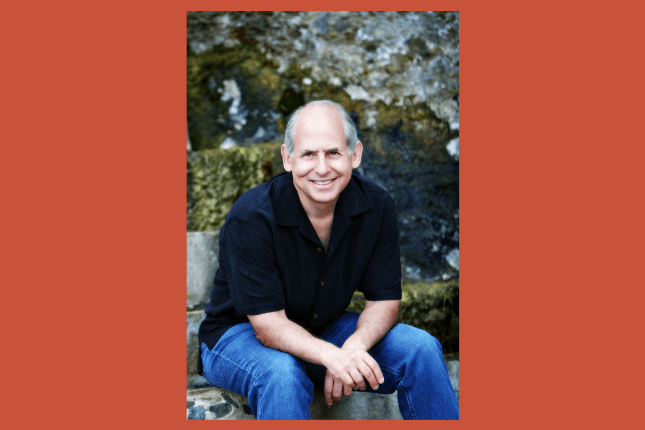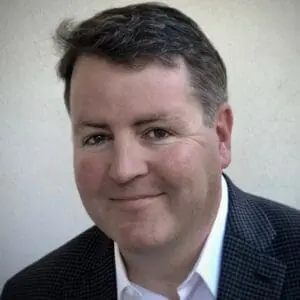Today’s highly informed, cutting-edge therapists take pride in their growing knowledge of brain science. Mountains of books and endless hours of seminars teach us about our left, right, male, female, and reptilian brains—all exciting knowledge we eagerly apply in our clinical work. We now know more than ever about the brain. Yet, according to California psychiatrist and eight-time New York Times bestselling author Daniel Amen, we’re still apprehensive about looking at it.
For nearly 20 years, Amen has led a controversial quest to make brain imaging common practice in the field. His prolific use of single-photon emission-computed tomography (SPECT) to detect various types of psychiatric disorders challenges the long-held belief that talk and observation are sufficient for diagnosis. Instead, he argues, we need to see the organ we treat.
Despite being admonished by prominent researchers for the unconventionality of his work, Amen continues to boldly advocate for the use of SPECT, train other clinicians to use it, and collect praise from clients who say his methodology has revolutionized their lives. Acknowledging both his detractors and extollers, he took a minute away from his work at the Amen Clinic to share his thoughts on imaging, diet, Adam Lanza, and the National Football League (NFL).
—–
RH: What first drew you to psychiatry?
Amen: I was drafted in 1972 and became an infantry medic, which is how I came to love medicine. But I realized I didn’t like sleeping in the mud or the idea of being shot at, so I got myself retrained as an x-ray technician—and that’s where I learned to love imaging. Then, when I was a second-year medical student, my wife at the time tried to kill herself, which horrified me. I brought her to the department of psychiatry at Oral Roberts University, where I was in medical school, and just fell in love with her psychiatrist because I realized if he helped her, which he did, psychiatry would save her life—and I’d be better, our children would be better, and even our grandchildren would be better for it. So I fell in love with psychiatry because I realized that it had the potential to change generations of people.
RH: How did this turn into an interest in brain imaging?
Amen: In 1991, I was the director of a dual diagnosis unit at a psychiatric hospital in northern California and heard a lecture on brain SPECT imaging, a computerized technology that looks at blood flow and activity in the brain. In that one lecture, my two professional loves—imagery and psychiatry—came together and revolutionized my life. Over the next 23 years, my colleagues and I built the world’s largest database of brain scans related to behavior, which is now about 87,000 scans. I mean, it was just so cool! Psychiatrists are the only medical doctors who never look at the organ they treat. Neurologists look, cardiologists look, your orthopedic doctor looks, gastroenterologists look. Every other medical specialty looks—but psychiatrists guess.
Before imaging, people would come in with six out of the nine DSM-IV criteria for depression, and I’d put them on Prozac. Some people would get better, and some would get worse, but there was no way to predict which way it’d go. Once I had imaging, I became much better at predicting who’d get better and who’d get worse. I’ve been pretty passionate about it, despite getting a fair amount of crap from my colleagues.
RH: Why is there so much controversy?
Amen: It’s easier for my critics to say that I’m a snake-oil salesman or a charlatan than to say, “Huh, I wonder what this really is all about?” In fact, the lecture I went to on brain SPECT imaging was at the American Psychiatric Association. So I actually learned the technique from the people who later criticized me for using it, which is sort of funny. The thing is, they’re basically complaining about what I’m doing because they haven’t blessed it. Of course, I’m not the only person who does it now. There are probably 30 people in the world who do it routinely, and it’s exciting! We have six clinics, and our biggest referrals are patients. Almost half our new patients come from our existing patients. We like that.
We do outcomes on every patient we see, and we’ve published an outcome study. On average, our patients have received 4.2 diagnoses, have previously seen 3.3 providers, and are on four to six medications—so most would be considered treatment resistant. We do sophisticated neuropsych assessments when people first come in; then six months later we repeat the testing. At the end of six months, 75 percent of patients are better across all measures, and for 85 percent, their quality of life goes up.
RH: SPECT is a diagnostic tool, so what treatments are you using to get these outcomes?
Amen: First, I create brain envy in my patients. When they see their brain image against a healthy brain, they generally want theirs to be better. Second, I teach them what to avoid: drugs, alcohol, brain injuries. But we get our best testimonials by far from planting the right diet in people’s lives. Food can be medicine or poison. A high-carbohydrate diet is associated with four times the risk of Alzheimer’s disease, while a high healthy-fat diet is associated with 42 percent less risk for Alzheimer’s disease. Most people don’t know that as your blood sugar goes up, the size of your brain goes down. So if you don’t exercise, if you’re not engaged in lifelong learning, if you eat poorly or are under chronic stress, if you have untreated attention deficit disorder (ADD) or depression—all those things increase your risk of dementia. There are 140 studies indicating that as your weight goes up, the size and function of your brain goes down. Given that two-thirds of us are overweight, it’s the biggest brain drain in the history of our country.
The third thing I tell patients is to engage in regular brain-healthy habits. There was a head-to-head study in Holland where they took ADHD kids, put them on an elimination diet versus doing nothing, and 73 percent of the kids had greater than 50 percent reduction in their symptoms after three months. So I could give you Ritalin—and I like Ritalin, it works—or I could change your diet. Healthy brain habits involve diet, exercise, new learning, and baseline supplements that are specifically targeted to what we see in the scans. We start with the least toxic, most effective thing, so we’ll often start with natural supplements because they work when they’re targeted effectively. If they don’t work, we’ll also use medication. But in contrast to what most people do, we target it to what your brain needs and not just a cluster of symptoms.
I tell the story of this boy, Jared, who was diagnosed with ADD when he was 3 years old. By the time we saw him at 14, he’d seen six different doctors and failed all the stimulants for ADD—in fact, they’d made him more aggressive. They were going to put him on an antipsychotic, but the mother said, “No, I don’t think so. Let’s take a look at his brain.” It turns out that he had the pattern that absolutely responds badly to stimulants. We gave him a group of natural supplements, and he’s doing great. But they were targeted to his brain to calm it, not stimulate it. He’s been on the honor roll for the last two years. He never had friends, and now he has friends. You know, we changed the trajectory of his life.
RH: Why isn’t imaging more widely used?
Amen: Well, it’s the future. Everybody in my field knows it. In 2005, Thomas Insel, the director of the National Institute of Mental Health, said by 2010 imaging would be common in clinical practice. Unfortunately, he was wrong, but everybody knows it’s coming. If you think about it, psychiatry and psychology still make diagnoses today exactly like they did in 1840 when Lincoln was depressed. They talk to people, they look at them, and they look for symptom clusters. That’s still what happens 174 years later. Just wrap your brain around that. No other profession in medicine acts like that. And because we don’t look, we hurt people.
RH: Hurt people? How?
Amen: I was just reading an article in the New Yorker today about Adam Lanza. He’s the shooter from Sandy Hook. He’d seen multiple psychiatrists. He’d tried medication. They put him on Zoloft, and he only stayed on it a couple of days because it made him dramatically worse. But they never looked at his brain. He went to psychiatrist after psychiatrist, and they never looked. We’ve actually scanned a number of mass murderers, and their brains are awful. But if you know it ahead of time, then you can work to fix it. You can ask, “Why is this brain awful? Does it have an infection, an oxygen deprivation?”
RH: Head trauma can be a factor as well?
Amen: Yes, another thing we’ve done is the world’s largest study on active and retired NFL players. One of the big early lessons is that mild traumatic brain injury ruins people’s lives, and nobody knows it. So we’ve scanned and treated 150 players. When we first started, the NFL was in active denial, and you never heard about this issue. But over the last four or five years, it’s been rampant in the news. It’s a top issue in the NFL right now. And Pop Warner, a youth football organization, has decreased by 10 percent in the last two years—which I’m thrilled about, because why would you ever take a developing brain, put it in a helmet, and start slamming it up against other people?
RH: How can the average therapist learn from your work?
Amen: They can start learning about brain health. Most therapists never learn about the brain. Regardless of the type of therapy they practice, it’s the brain they’re working on, so they should learn about that organ.
Ryan Howes
Ryan Howes, Ph.D., ABPP is a Pasadena, California-based psychologist, musician, and author of the “Mental Health Journal for Men.” Learn more at ryanhowes.net.












